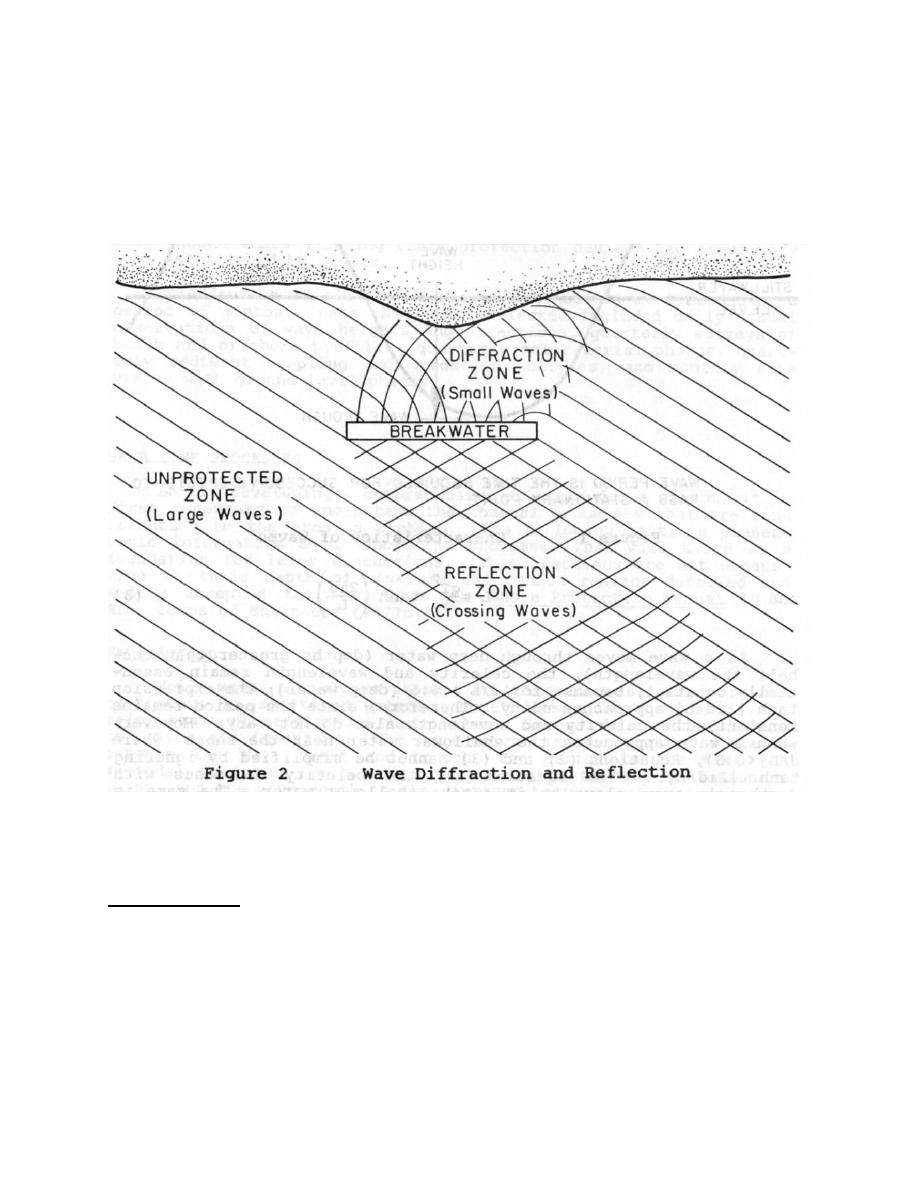
cushion. If the structure is a smooth vertical wall, the reflection is nearly perfect; and if the wave crests
are parallel with the breakwater, the reflected and incident waves will reinforce each other to form
standing waves twice as high as the incident waves. This could cause considerable bottom scour at the
toe of, and offshore from, the structure. If the waves approach at an angle, no standing waves will form,
but the resulting water surface, with crossing wave crests, will be rough and choppy. These short-crested
waves could also cause considerable bottom scour.
The final important wave characteristic is evident when waves break either on a beach or
structure. The uprush of water after breaking is called runup and it expends the wave's remaining
energy. The runup height depends on the roughness and steepness of the structure or beach and the
characteristics of the wave. In general, increased roughness reduces runup.
Sediment Transport
The large variety of littoral (shoreline) materials include rock, boulders, cobbles, gravels, sand,
silt, and clay. A number of classification systems have been developed to identify these materials, and
typical scales of sizes are given in Figure 3.
Rock characterizes cliff shorelines, such as along the coasts of northern California. Boulders are
often present at the base of such cliffs because of rock fracturing and weathering. Cobbles and gravels
8



 Previous Page
Previous Page
